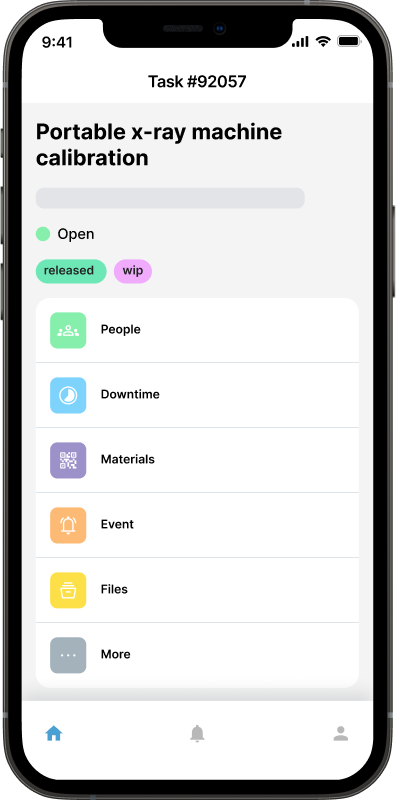Future Trends in Maintenance Management: What's Next for CMMS Software?

Maintenance management is changing faster than ever. With new technologies, smarter equipment, tighter budgets, and higher expectations for uptime, maintenance teams are rethinking how they work. And at the center of all this change is CMMS software—once a clunky, confusing tool, now becoming the backbone of modern operations.
At Maintainly, we've spent years building a CMMS that's intuitive, modular, fast to set up, and refreshingly simple. And as we look toward 2026 and beyond, one thing is clear: the future of maintenance is smarter, more connected, and more automated than anything before.
Let's talk about some trends in the CMMS space.
1. CMMS Will Become the "Brain" of Maintenance Operations
Traditionally, a CMMS stored work orders and equipment data. That's it. But maintenance is no longer just about tracking tasks. It's also about aligning teams, decisions, costs, and performance. In the next few years, CMMS platforms will become fully integrated hubs that unify:
Work orders
Asset histories
Inventory and purchasing
Timesheets
Vendor and contractor management
Reporting and insights
Think of it as the operational "command center" for maintenance teams. At Maintainly, we're already heading in that direction: unlimited work orders, automated preventive tasks, audit trails, integrated inventory, and timesheets add-ons, all accessible from the one platform, where features can be enabled and disabled, depending on each customer's needs.
2. Predictive Maintenance Will Become the New Standard
Preventive maintenance (PM) is no longer the finish line; it's the starting point. Predictive maintenance uses data, sensors, and trends to determine exactly when an asset needs attention. No guesswork. No unnecessary downtime. No over-maintaining equipment.
The future will bring:
Sensor-based alerts connected directly to CMMS
Real-time vibration, temperature, or runtime monitoring
Automatic work orders triggered by anomalies
AI-driven predictions for part replacements
Right now, only large enterprises can afford this level of monitoring, but costs are rapidly dropping. Soon, even small facilities will have access to predictive insights that once required million-dollar industrial systems.
3. Automation Will Reduce Admin Work by 50% or More
Maintenance technicians already struggle with paperwork, data entry, follow-ups, and manual scheduling. In the future, these repetitive tasks will be automated entirely.
Expect automation like:
Work orders that generate themselves from meter readings
Auto-scheduling based on actual equipment load
Automated follow-ups and approvals
Smart routing of work requests
Automatic cost summaries and timesheet entries
Auto-generated compliance reports
This is exactly why we built Maintainly with auto-populated timesheets, repeating PMs, asset QR codes, and other small automations that create massive time savings. By 2027, we predict most CMMS systems will eliminate the majority of manual admin work.
4. Mobile-First Maintenance Will Take Over Completely

Desktop-only maintenance tools are quickly becoming a thing of the past. By 2026, over 80% of maintenance work is expected to be logged on mobile devices, with technicians relying on their phones for instructions, checklists, and uploads. QR codes will replace manual data lookups, while photographs and videos become standard proof of task completion.
Recognizing this shift, Maintainly designed a powerful mobile CMMS from the start with native iOS and Android versions, enabling teams to scan asset QR codes, upload media, complete checklists, and receive push notifications, all without ever sitting at a desk. The trend is clear: maintenance is happening on the move, and CMMS software must evolve to keep up.
5. Maintenance Requests Will Become More Transparent and Self-Service
For years, maintenance teams have battled constant interruptions:
"Can you fix this?"
"Is my request approved?"
"Has the technician arrived?"
Future CMMS tools will allow non-technical staff, tenants, departments, or customers to:
Submit requests digitally
Track updates in real time
Upload photos or videos
Approve or reject work
View progress without calling the maintenance team
In many industries, like facility management, rental properties, manufacturing, and hospitality, self-service request portals will become standard. That's why Maintainly already offers unlimited maintenance requests and easy workflows for approvals. It reduces chaos, supports traceability, and gives technicians back valuable time.
6. AI Will Support, Not Replace, Maintenance Teams
People worry AI will replace technicians. That won't happen. What AI will do is support teams by:
Suggesting probable causes of breakdowns
Auto-assigning tasks based on skill, location, or workload
Predicting spare part shortages
Analyzing historical failures and recommending PM changes
Improving inventory forecasting
Generating instant reports
Rather than digging through spreadsheets or old records, maintenance teams will get answers instantly. Maintainly's future roadmap includes AI-enhanced recommendations to help teams make smarter decisions, faster.
7. CMMS Platforms Will Be Fully Modular and Scalable
One-size-fits-all enterprise systems are fading away. The future belongs to modular, mix-and-match tools that grow with your organization.
Teams will be able to:
Start with core maintenance features
Add inventory only when needed
Add timesheets when tracking becomes complex
Scale from 1 user to 1,000+ without switching systems
Turn features on and off anytime
This is one of Maintainly's biggest strengths: a modular system that expands when you're ready and never forces you into expensive, bloated packages.
8. CMMS Will Focus on Total Cost of Ownership (TCO), Not Sticker Price
In the past, companies often chose CMMS software based solely on sticker price, overlooking hidden costs like months of training, complex implementation fees, forced upgrades, paying for unused features, and challenging onboarding for new staff. The trend is shifting: organizations are now prioritizing total cost of ownership (TCO) rather than upfront cost.
9. The CMMS Experience Will Become Consumer-Level Simple
The final, and perhaps biggest, trend: CMMS platforms will become dramatically easier to use.
Gone are the days of dinosaur enterprise systems requiring: 6-month implementations, long training sessions, complicated menus, overengineered workflows, and slow updates.
Teams want a tool that feels as simple as using a mobile app: quick, intuitive, enjoyable. This has always been Maintainly's philosophy:
Get started in minutes
Zero learning curve
Modern, clean interface
Support included
Usability will become the single greatest competitive advantage in the CMMS world.
A CMMS Future
CMMS software is becoming a living, connected, intelligent system that helps maintenance teams work faster and smarter.
By 2026 and beyond, the biggest changes will include: predictive maintenance, mobile-first workflows, automated admin tasks, AI-driven insights, modular scalability, seamless integrations, self-service maintenance requests, and lower lifetime ownership costs.
At Maintainly, we're not waiting for the future; we're building it. If you're ready for a CMMS that's modern, intuitive, and built for the next decade of maintenance management, try Maintainly free for 14 days. No credit card. No setup headaches. No dinosaur software.
Get started today.

